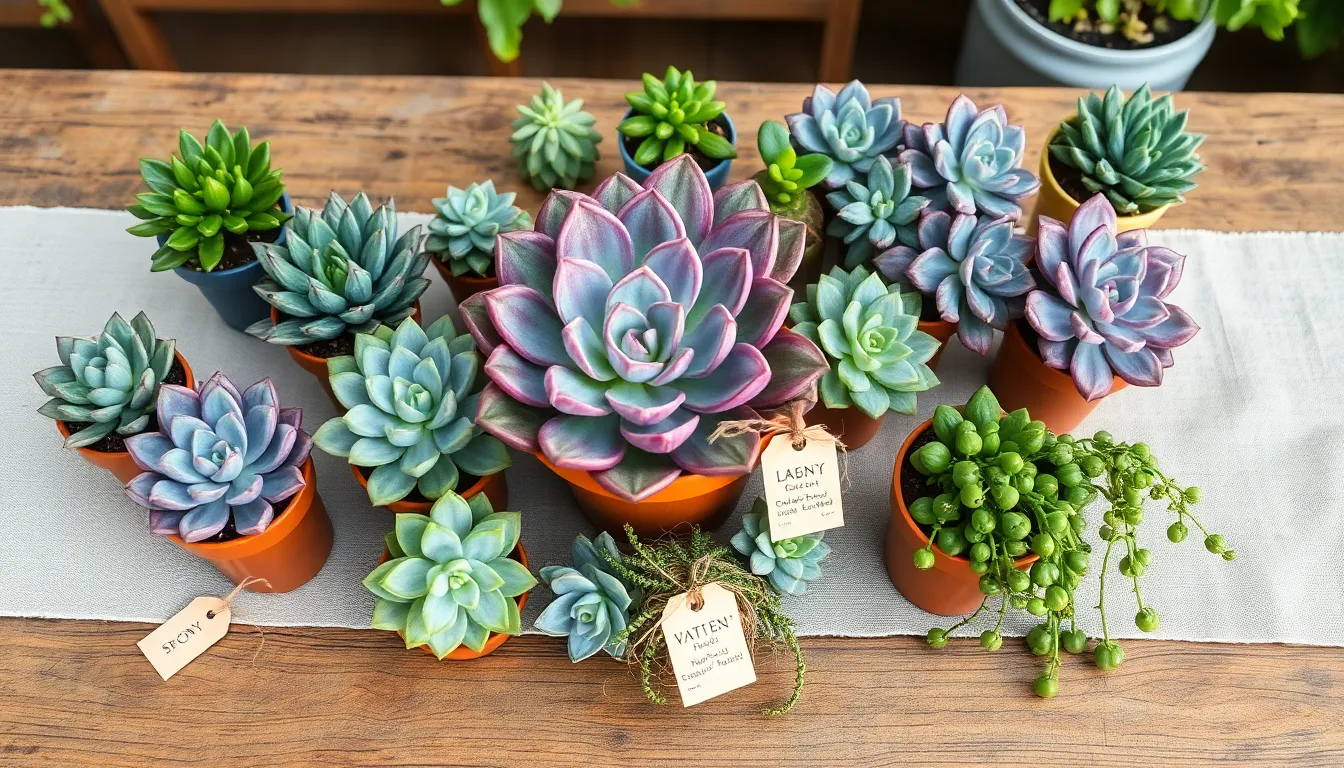Welcome to a world of endless possibilities where every gardener, from the curious novice to the seasoned green thumb, can experience the joy of nurturing new life from simple cuttings. Succulents, with their stunning variety and resilience, offer a perfect canvas for your propagation journey, promising both beauty and satisfaction as you watch these hardy plants thrive under your care.
This guide is your key to unlocking the secrets of succulent propagation, providing a curated list of species that are not only easy to propagate but also rewarding to grow. Imagine the thrill of seeing a tiny leaf transform into a vibrant, thriving plant—all while saving money and expanding your collection with minimal effort.
With these practical tips, you’ll gain valuable insights and techniques that ensure your propagation efforts are successful and enjoyable. Let’s embark together on this exciting adventure, confident that with the right guidance, you can master the art of succulent propagation and enjoy the lush rewards it brings to your home garden.
Select Healthy Leaf Cuttings

When selecting leaf cuttings for succulent propagation, choose leaves that are healthy, firm, and free from blemishes. Avoid leaves that are damaged, discolored, or overly soft, as they are less likely to root successfully.
Gently twist the leaf off the stem, ensuring you remove the entire leaf without tearing it. A clean break at the base is crucial because any damage to the leaf can hinder its ability to grow new roots.
After selecting and removing the leaves, allow them to dry out for a day or two in a warm, dry place. This period allows the cut end to callous over, reducing the risk of rot when the leaf is placed in soil.
For the best results, use a well-draining soil mix, specifically formulated for succulents and cacti. Consider adding a layer of perlite or coarse sand to improve drainage, as succulents are prone to root rot in overly moist conditions.
Allow Cuttings to Callus
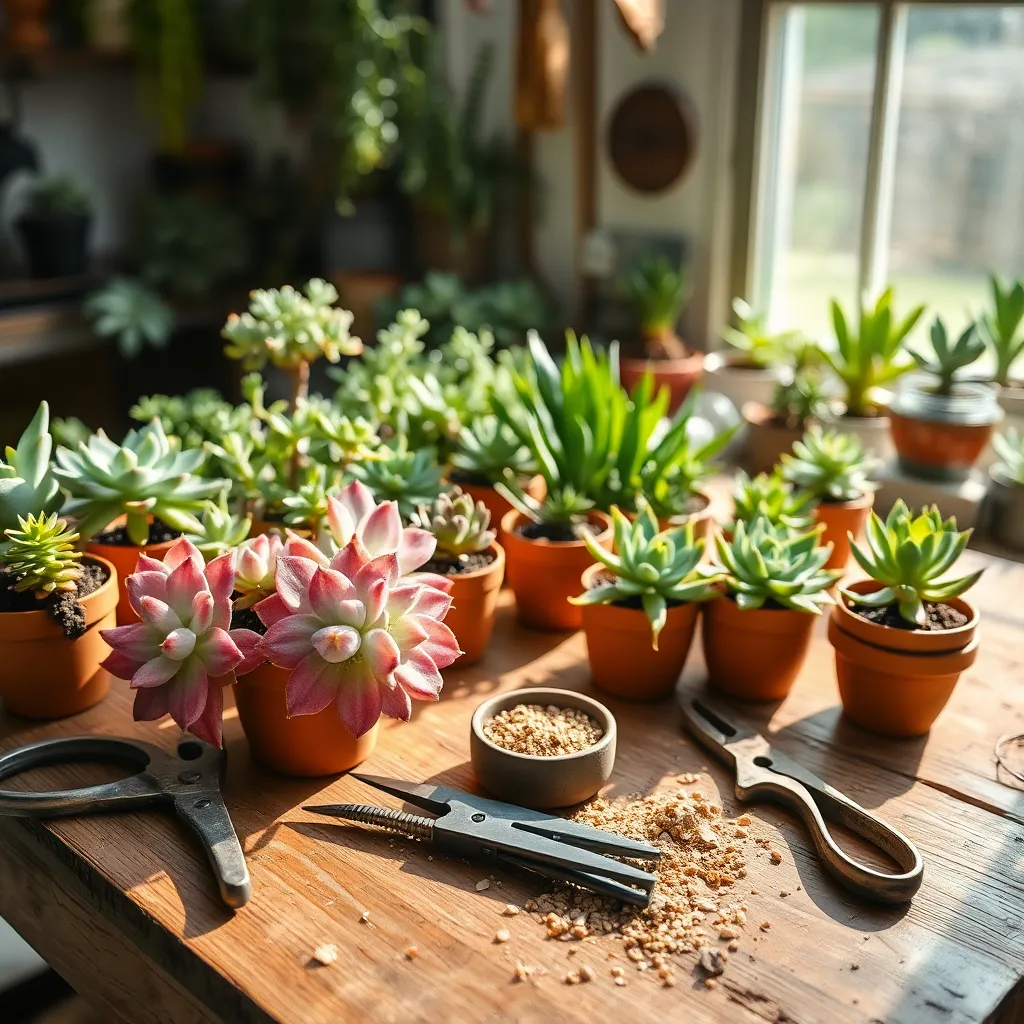
Once you’ve selected healthy leaf cuttings, it’s essential to allow them to callus before planting. This step helps prevent moisture loss and potential rotting, which can occur if the cuttings are planted too soon.
To properly callus your cuttings, place them in a shaded area with good air circulation for about 3 to 7 days. During this time, the cut end will form a protective layer, which is crucial for successful rooting.
For gardeners in humid environments, consider extending the callusing period to ensure the cuttings dry adequately. This is particularly important for thicker-leaved succulents, which might take longer to form a sufficient callus.
Once callused, the cuttings are ready to be planted in a well-draining soil mix. A combination of cactus soil and perlite or coarse sand works well to provide the necessary drainage.
Plant in Sandy Soil Mix
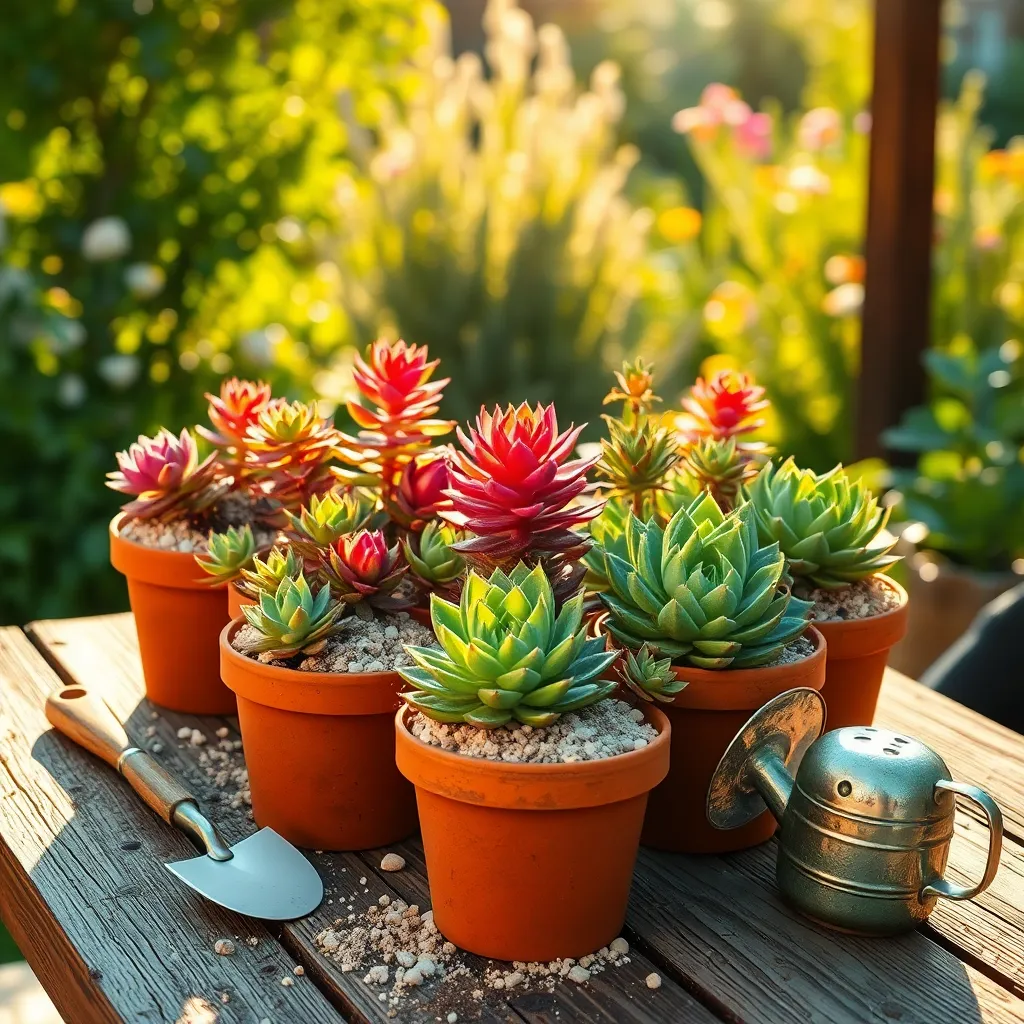
After allowing your succulent cuttings to callus, the next step is to plant them in a suitable soil mix. Succulents thrive in a well-draining environment, making sandy soil mix an excellent choice for propagation.
To create an effective sandy soil mix, combine equal parts of coarse sand, perlite, and potting soil. This blend ensures that excess water drains away quickly, preventing root rot, which is a common issue with succulents.
For those new to gardening, you can purchase pre-mixed cactus or succulent soil, which typically has the right balance of drainage and nutrients. Advanced gardeners might consider adding small amounts of pumice or fine gravel to further enhance drainage and aeration.
Once your cuttings are planted, place the pots in a location with bright, indirect light. Water the cuttings sparingly—about once a week or when the top inch of soil feels dry—to encourage root development without over-saturating the soil.
Mist Soil to Encourage Roots
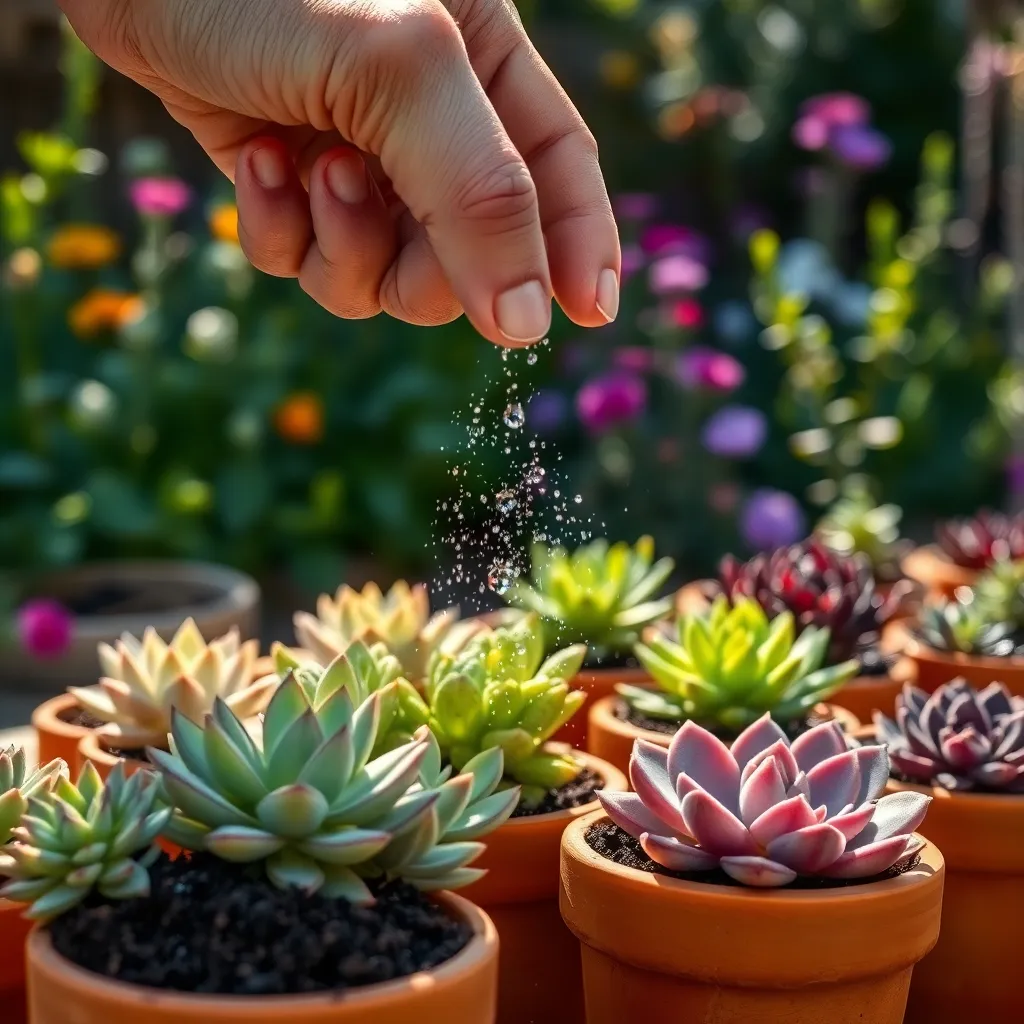
One effective way to encourage root growth in propagated succulents is by misting the soil. Using a fine spray bottle, lightly mist the soil surface once every few days to keep it slightly damp without overwatering.
Succulents thrive in well-draining conditions, so it’s essential to avoid waterlogging. Ensure your propagation trays or pots have good drainage holes to allow excess water to escape, preventing root rot.
For beginners, maintaining the right moisture level can be tricky, but remember that succulents prefer dry conditions. Monitor the soil closely; it should feel barely moist to the touch, mimicking their natural arid environment.
Experienced gardeners might experiment with adding a humidity dome over their propagation trays. This technique can create a microclimate that retains moisture and warmth, accelerating root development.
Ensure Ample Indirect Sunlight
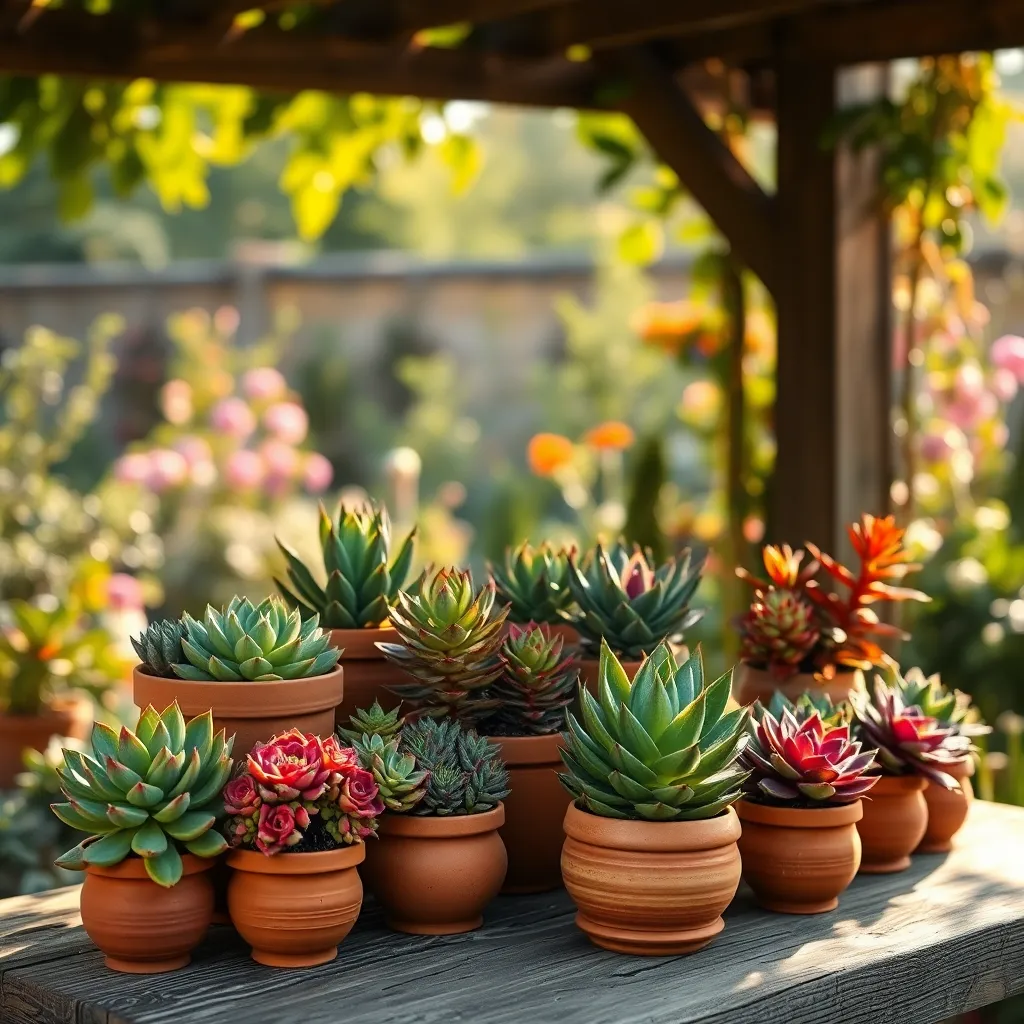
Providing ample indirect sunlight is essential for successful succulent propagation. Succulents thrive when they receive bright, filtered light that mimics their natural environment.
Avoid placing your propagated cuttings in direct sunlight, as this can lead to leaf burn and hinder growth. Instead, position them near a south-facing window with sheer curtains to diffuse the light.
For indoor gardeners, using a grow light can be a fantastic alternative to natural sunlight. Choose a full-spectrum LED grow light, and keep it on for about 10 to 14 hours a day for optimal results.
Monitor your succulents closely for signs of too much or too little light. Etiolation—where plants become leggy and pale—indicates insufficient light, while scorched leaves suggest too much sun exposure.
Conclusion: Growing Success with These Plants
In nurturing the growth of succulents, we discover five key relationship concepts: patience, care, communication, resilience, and growth. Just like succulents need time to root and flourish, relationships thrive on patience and understanding. Consistent care and attention ensure they remain vibrant, while open communication nurtures trust and connection. Resilience helps us weather storms together, and, ultimately, growth is a shared journey, much like watching your propagated succulents bloom.
An actionable step you can take today is to identify one area in your relationship that could use a little extra care, just as you would check on a new succulent cutting. Whether it’s through a heartfelt conversation or a spontaneous act of kindness, your relationship will benefit from this moment of attention.
Bookmark this article as a guiding resource for when you need a reminder of these foundational concepts. By doing so, you’ll have a handy guide to revisit these insights whenever you seek to strengthen your bonds.
Remember, like succulents, relationships can thrive even in the toughest conditions with love and dedication. Embrace these principles, and watch your relationships blossom into their fullest potential.

